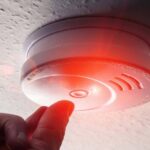 What is an Electrical Testing Certificate?
What is an Electrical Testing Certificate?
An electrical testing certificate, also known by the Electrical Installation Condition Report (EICR) It demonstrates how secure your property’s electricity is. It also contains any repairs required to the wiring.
It’s an obligation for landlords and is one of the most important safety tests that you must perform as a landlord. Landlords must update their EICR every five to five years since new regulations came into force in April 2020.
It is an official requirement
If you are buying or selling a home, an electrical testing certificate can aid in speeding up the process by allowing buyers to be assured that the home has been tested for safety. It guarantees buyers that the electrical wiring within the home is in good working order and won’t cause any issues.
After a thorough inspection of the electrical wiring in your house or business an experienced electrician will issue an official certificate. This will highlight any areas of concern or damage that require attention to ensure that the electrical wiring is safe and complies with relevant regulations.
There are three kinds of certificates that are available: the Electrical Installation Certificate (EIC) Electrical Installation Condition Reports (EICR) and the Minor Works Certificate. Each type of certificate is unique and serves a specific purpose.
These certificates are legally required in the UK for landlords who are private to ensure that their properties are in compliance with electrical safety standards. This is to shield tenants from electric faults that can cause danger and to reduce the liability of landlords.
These tests are performed by an engineer, or a certified electrician and are part the process of letting the property. They will examine all electrical components, including lighting fittings, wiring and fuse boxes for any problems or defects which could result in injuries or accidents.
If a landlord’s EICR shows that some work is required to be done then they will have 28 days to complete this before they can give new tenants access to the property. This allows the landlord to complete any necessary work and then retest to confirm that the work has been done correctly.
A landlord could also opt to have the property inspected by their own electrician or engineer. This can save time and money as the electrician can complete any repairs and issue a brand new safety certificate.
The Government has enacted several laws pertaining to the electrical testing of rental properties. These laws will be applicable to any new tenancies established after July 2020 and existing tenancies starting in April 2021.
It is a form of documentation
The legal document, also known as an electrical test certificate is used for confirming the safety of electrics within the property. They are issued after an exhaustive inspection and testing of the electrical system. They are also known as an electrical installation condition report (EICR).
When a building is being sold it’s best to obtain a valid electrical testing certificate prior to putting it to the market. This will make selling easier and assure buyers that their new home can be lived in safety.
The documents can be supplied by an inspector from the local authority, an employed electrician or a third party certifier. They can be printed or digitally. They can also contain detailed circuit information like ratings for voltage, resistance, current and the number of leads’ colours size, wire sizes, integrated fuse information, and a listing of the components in the product.
It is important to keep in mind that these documents are legally required as part of legal procedures, such as when a home is being put up for sale. This means that if you cannot provide these documents, you could have to wait longer before closing the sale and close the property.
Another reason for keeping these documents is that they serve as proof of the work that was done on the electrical system within your home. These documents can be used in the event that the system should ever be damaged. It also shows that the electrical system has been properly checked and tested. This can save you money in the long-term.
The document is typically issued by an electrician who performed the inspection and testing of the electrical system. It is also known as an electrical installation condition report (EICR) and is often called an «electrical safety test» or «landlord safety certificate».
The report highlights any issues in the electrical system and the electrician then gives recommendations on what further work can be completed to correct these issues. This could involve remedial work or retesting the electrical system to ensure it is in compliance with safety standards. It is recommended that the report be repeated at least every five years to ensure that the electrical system is functioning to standard.
It is an historic record
An electrical testing certificate is an official document that demonstrates that the electrical wiring in your commercial property or home are safe. It can be used to verify the safety of electrics in your commercial or home property, and electrical testing certificate also for commercial purposes such as selling it or renting it out.
It can also be used to prove that an electrician performed work to an extremely high standard. This will help to avoid penalty from the regulatory authorities and will stop people from working with unsuitable equipment or work practices.
The keeping of these records is very important for business owners and their employees, as they will be a proof that an installation has been tested to a high level of safety. They also can be useful in the event of building injury or damage resulting from an electrical malfunction.
A record of inspection (RoI) describes the formal documentation used to document the inspection of electrically dangerous work as required by Regulation 72 of Electricity (Safety) Regulations 2010 It provides details of the work that was inspected as well as who performed the inspection, in addition to other relevant information.
The inspection report must be also given to the person who authorized or contracted the work. It is required to be kept by the person who contracted or authorized the work for a period of seven years, either in hard copies or electronically.
If the inspection was conducted for work covered by more than one CoC or ESC the inspection report must contain the certificates of conformity to which it relates. This is important to ensure that all pertinent information is entered into the Energy Safety high risk data base.
It’s also a good idea to include your company’s logo on the electrical test certificate, as it can be an excellent way to increase brand electrical testing certificate recognition. This will allow potential customers to find you on the internet.
A certificate for electrical testing is an essential document for any business that works with electrical installations, such as electricians, plumbers, or heating engineer. It is crucial to keep records of any workdone, as this will allow future repairs or modifications to be completed without the need for exploratory work.
It is vital
A great method to detect and fix electrical problems in a building is through electrical testing. It can protect against electric shocks and fires and reduce the cost of maintenance and repairs.
It could also help you save money on your energy bill by identifying areas that might be wasting energy. This will help you reduce your costs in the long run and ensure that your business runs efficiently.
If you’re a landlord or agent you should consider getting an electrical testing certificate. This will show that your property can be let out to tenants. It is also an excellent marketing tool if you are planning to sell your property. It will make it easier for potential buyers see your property, and lead to faster sales.
In the UK the law requires landlords get an in-depth inspection of their electrical systems for rental properties at least every five years, as per the Private Rented Sector (England) Regulations 2020. If you don’t have this inspection done and you don’t, you could face several legal problems and costly fines in the event that the law is broken.
This is why it’s essential to have this inspection carried out by a licensed electrician. They can spot any issues and suggest solutions, including rewiring when necessary.
A certificate of electrical testing will include information regarding the test, such as the date it was completed and the long it took to complete. It will also indicate if there are any problems in the system that require to be fixed immediately.
The inspector will then give you a number that will indicate the severity of the issue they have identified. There are a variety of codes that are possible to use for example, C3 which means the issue is not urgent, but it is something that needs to be fixed. There’s also FI, which indicates that further investigation is necessary.



